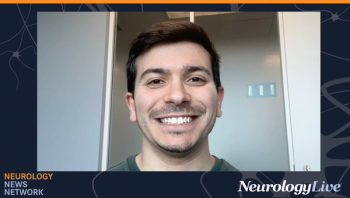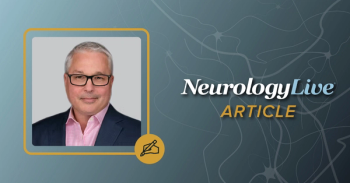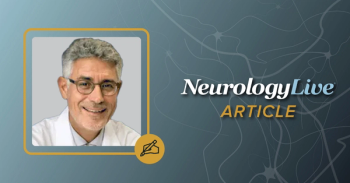
Marc Nuwer Explores the 2019 CPT Codes for Epilepsy
The professor and vice chair of the neurology department at UCLA discussed the new VNS, RNS and DBS CPT codes for 2019.
Marc Nuwer, MD, PhD
At the 72nd American Epilepsy Society’s annual meeting in New Orleans, Louisiana, Marc Nuwer, MD, PhD, the professor and vice chair of the neurology department at UCLA, spoke with NeurologyLive about the new vagus nerve stimulation (VNS), responsive neurostimulation (RNS) and deep brain stimulation (DBS) CPT codes for 2019, how to use them for patients with epilepsy and their advantages.
Nuwer explained that with these new patient visit codes and documentation rules, physicians are taking a step forward and are able to get rid of some of the hassle, and even though the dollar value may come out to be more or less than before, it’s less hassle for the same pay.
NeurologyLive: What are the 2019 CPT codes?
Marc Nuwer, MD, PhD: Every year CPT comes out with a new set of codes for various procedures. CPT is a product of the American Medical Association and it's meant for all physicians to know how you code for procedures. This year we have some new codes that came out for some of the services done by the epilepsy community and that would be VNS or vagus nerve stimulation and RNS or responsive neurostimulation procedures. In the new codes, the old way of coding for services is gone, so there are brand new codes that are out.
For VNS we now have 2 codes which will code for the services that are either done by changing 1—3 parameters or by changing 4 or more parameters. The RNS code now is officially part of the deep brain stimulation or DBS coding family and those codes will not be judged on the number of parameters, they'll be judged on the amount of time you spent with the patient that day when you're doing programming. For each 15-minute you code that unit of service, so if you spend half an hour with the patient, you can code for the entire half-hour.
Why did the codes change?
The reason that we had such code changes is that codes get reviewed from time to time to see if they're still current, and it was felt those codes that we had been using were not current. The coding wording has been changed and the use has been changed.
Are there any advantages of the new codes?
One advantage is that instead of having the RNS added on to the DBS, more or less unofficially, and informally, it's now been officially made part of the DBS family so it's not miscoding in any way, it's now officially that's where you belong.
Is there a code for interpreting EEGs?
There's a whole new code that's out for interpreting the EEG that's recorded by the RNS devices. Up until this time, there's been no way to code for the time that's spent interpreting the EEG, now there will be a code that pays the physician for interpreting the RNS EEG and to do so every month. If you have a patient who's been on the RNS device for a while, you can review the EEG once a month and be paid for the work that you're doing.
Up until December, you would only get paid for doing programing but now you'll be paid for doing programming and for the time you spend reading the EEG to determine what kinds of changes in programming you might want to make—it makes more sense to do it this way.
What are the changes in the way physicians are paid for seeing patients in the clinic?
Last summer Medicare proposed that outpatient services would be paid at a single rate, no matter whether you spent 5 minutes with the patient or an hour with the patient, you get the same amount of money. There was a firestorm of objection to that and we were pleased that we were able to line up a lot of sponsors of letters to CMS saying that's a bad idea. In the beginning of December, CMS came out with a revised proposal which leaves alone the Level 5 services which we've always depended on for our epilepsy patients and it comes up with extra payments for the Level 4 services that we also use for our seizure patients. With those together, it more or less balances out where we were before and allows us to maintain a level playing field on reimbursement, even with the new changes in CMS's proposal.
The changes actually would be helpful for us in several ways. It would help us because it eliminates some of what we call the hassle factor, you're hassled by having to write down at least 4 elements of what happened in the past month and write down at least the past family and social changes, and document the patient's social fact in the service like are they driving or not driving, and to do many things over and over again that your nurse already wrote down or the patient wrote down and brought in for you like their seizure log with what days they had seizures, how much medicine were they on, how much medicine did they use from their rescue medicine and all that, and that's all documented. Medicare rules up to this point have made physicians have to themselves redocument everything that other people had documented before a lot, and a lot of that will go away with the new changes.
We also have been bothered by physical exam, what we call bulleted exam elements—you have to do all these 23 things and if you don't do those 23 things you can't bill at a Level 4 or 5 for your new patient—that'll all go the way.
We hope that as the dust settles on these changes for patient visit codes and documentation rules, we're actually taking a step forward because we're getting rid of a certain amount of hassle and the dollar values may come out to be more or less where we were before—so that's a step forward, less hassle, same pay, and we like that.
Our video EEG monitoring codes will be up for review this year and new codes will come out, but there's still a lot of uncertainty. We’ve had some broad discussions about where that's going to go, you may be able to get more accurate understanding of what you're doing with new coding, so we'll hope that it works out adequately but we have to hold our breath to see how much Medicare's actually going to reduce the reimbursement for video EEG—that's a downside of going through the revisions, it’s better coding but less reimbursement for video EEG.
Transcript edited for clarity.
Newsletter
Keep your finger on the pulse of neurology—subscribe to NeurologyLive for expert interviews, new data, and breakthrough treatment updates.



























